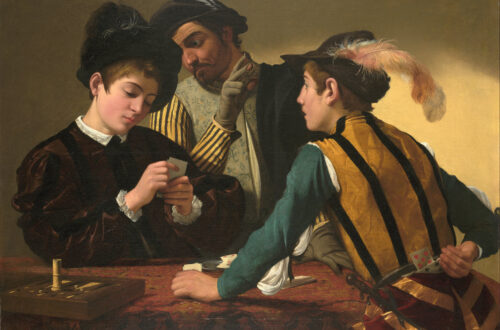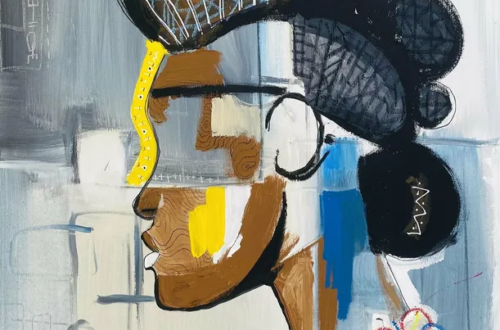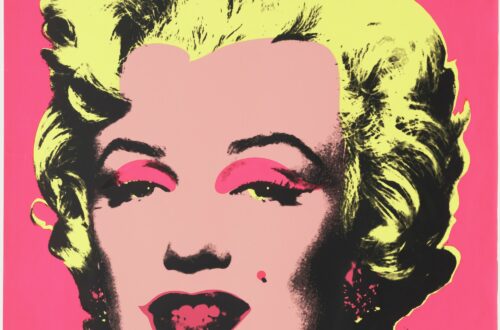Contemporary art, known as the “art of today”, is ever-changing, becoming increasingly innovative and culturally diverse. The sheer abundance of movements that have occurred since the beginnings of contemporary art makes it one of the most eclectic artistic productions that humanity has ever seen. Contemporary art has given us some of the most prominent movements in art history, which are characterized by their subversive stance, experimental nature and immersive experience for viewers. They encourage viewers to push boundaries and challenge the status quo, offering a brand new perspective on the world.
Let’s have a look at some of today’s most thought-provoking and influential movements born out of contemporary art, from LGBTQ art, contemporary portraits, environmental art to digital art, hyperrealism and Pop art, and the ways in which they are raising public awareness on a breadth of social, cultural and political issues.
Contemporary art’s core values
Socially-engaged art

LGBTQ+ artists are redefining contemporary art, advocating for social change, cultural diversity and inclusion. These artists-activists are addressing social and political concerns through their exploration of identity and new ways of being. In the spirit of change and adversity, they are moving beyond gender-defining stereotypes and raising awareness of the queer experience and LGBTQ rights. Socially-engaged artworks are fighting back against hate crimes, calling for equal rights, tolerance and love for all. Pop artist Thomas Dellert is educating the world on important issues that concern the queer community, such as trans rights, drag queens and pride.
Search for identity

The rise of social media is drastically changing our behaviors and has caused the disappearance of a singular self. Artists are navigating this fundamental cultural shift with the emergence of contemporary portraits, in which they are exploring the multiplicity of the self and denouncing the superficiality of selfie-obsessed culture. Drawing inspiration from pop culture and history, contemporary artists are using portraits as a tool to reflect the complexity of contemporary society, express untold stories of the subjects they are depicting and subvert traditional notions of beauty.
Environmental issues

With the growing sense of urgency surrounding climate change, artists are more than ever using their art as a platform to raise awareness on ecological issues (rising sea levels, Amazonian forest fires…). Environmental artworks often feature natural or sustainable materials (plants, earth, soil, sand).
“In the time of climate change, global warming, natural disasters […] it is a special challenge for me as an artist to depict the melting of the glaciers and the resulting changes in our nature in a painterly way.” Monika Lehmann

The emphasis placed on the preservation of wild species is another prevalent theme in environmental art. Manuela Rathje creates bright colored paintings to represent her love for nature and wildlife. The painter calls the viewer’s attention to the beauty and purity of the subject-matter, in an attempt to highlight the disconnect between humans and nature.
Technologically advanced world
Digital art

The development of computer generated art in the 1980s, with artists such as Andy Warhol using an Amiga computer to create his Debbie Harry Amiga painting, started a brand new way of producing and consuming art. Artists are using digital tools and programmes such as Adobe Photoshop and Illustrator to explore the relationship between society and technology, creating a field of work defined by an intersection of computers, technology and science. Digital art is often celebrated for its cost-efficient, versatile and accessible nature, broadening horizons and expanding creative opportunities for artists.
Hyperrealism

The wider accessibility to digital photography at the start of the 21st century made way for an improvement in the resolution of images and high-quality pictures. Hyperrealism uses digital photographs as the basis for producing highly realistic, but also emotional and narrative artworks, including paintings and sculptures. Hyperrealism takes an interest in everyday imagery and seeks to uncover its utmost beauty and perfection. The hyper-realist style bears a socio-political message which forces the viewer to view the world as it is. The exaggerated reality and emphasis on details brings about a sense of raw, “new” reality.
Pop art

In the same vein as Hyperrealism, Pop art is interested in everyday objects and challenging traditional notions of art. Mass-produced goods and popular imagery are dissected and studied under every lens, elevated to the status of high-art. The emphasis placed on the banal, seen through the lens of irony, points to the fact that art does not need to be serious and can depict any subject. Pop art revolutionized the contemporary art scene in the 1960s and reflected the vibrant and bustling post-war American and British cultures. Its widely accessible nature still attracts many artists who continue to explore Pop art till this day.
The art of today
Contemporary art has expressed a desire to distance itself from high-art and instead, shows an interest in everyday, mundane subjects with Hyper Realism and Pop art, and a return to authenticity with portraits and socially-engaged art. Digital art shows us that contemporary art has the potential to be accessible to anyone in our technologically-advanced world, and can be both cost-efficient and highly creative.
Society, personal identity and visual culture have significantly changed over the past sixty years. Contemporary art observes this shift in mentalities, scrutinizing even the tiniest detail in order to start a critical discussion that concerns us all. The vast quantity of different art movements is proof to the eclectic, versatile and open-minded dimension of contemporary art.













